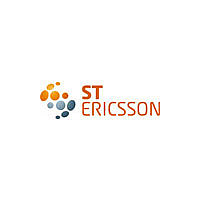ISP1362BDTM STEricsson, ISP1362BDTM Datasheet - Page 34

ISP1362BDTM
Manufacturer Part Number
ISP1362BDTM
Description
Manufacturer
STEricsson
Datasheet
1.ISP1362BDTM.pdf
(147 pages)
Specifications of ISP1362BDTM
Operating Temperature (min)
-40C
Operating Temperature Classification
Industrial
Operating Temperature (max)
85C
Package Type
LQFP
Rad Hardened
No
Lead Free Status / RoHS Status
Compliant
Available stocks
Company
Part Number
Manufacturer
Quantity
Price
Company:
Part Number:
ISP1362BDTM
Manufacturer:
NANYA
Quantity:
1 001
- Current page: 34 of 147
- Download datasheet (5Mb)
ISP1362_7
Product data sheet
10.4.2 OTG state diagrams
Figure 18
dual-role B-device, respectively. For a detailed explanation, refer to
Supplement to the USB 2.0 Specification Rev.
The OTG state machine is implemented with the software. The inputs to the state machine
come from four sources: hardware signals from the USB bus, software signals from the
application program, internal variables with the state machines and timers:
5. When the B-device completes using the bus, it stops all bus activities. Optionally, the
6. The A-device detects lack of bus activities for more than 3 ms and turns off its DP
7. The B-device turns on its pull-up.
8. After waiting 30 μs to ensure that the DP line is not HIGH because of the residual
•
•
•
•
HNP request from the B-device. At this point, the B-device becomes a host and
asserts bus reset to start using the bus. The B-device must assert the bus reset (that
is, SE0) within 1 ms of the time that the A-device turns on its pull-up.
B-device may turn on its DP pull-up at this time.
pull-up. Alternatively, if the A-device has no further need to communicate with the
B-device, the A-device may turn off V
effect of the A-device pull-up, the A-device notices that the DP line is HIGH (and the
DM line is LOW) indicating that the B-device is signaling a connect and is ready to
respond as a peripheral. At this point, the A-device becomes a host and asserts the
bus reset to start using the bus.
Hardware inputs: Include id, a_vbus_vld, a_sess_vld, b_sess_vld, b_sess_end,
a_conn, b_conn, a_bus_suspend, b_bus_suspend, a_bus_resume, b_bus_resume,
a_srp_det and b_se0_srp. All these inputs can be derived from the OtgInterrupt and
OtgStatus registers.
Software inputs: Include a_bus_req, a_bus_drop and b_bus_req.
Internal variables: Include a_set_b_hnp_en, b_hnp_enable and b_srp_done.
Timers: The HNP state machine uses four timers: a_wait_vrise_tmr,
a_wait_bcon_tmr, a_aidl_bdis_tmr and b_ase0_brst_tmr. All timers are started on
entry to and reset on exit from their associated states. The ISP1362 provides a
programmable timer that can be used as any of these four timers.
and
Figure 19
Rev. 07 — 29 September 2009
show the state diagrams for the dual-role A-device and the
BUS
and end the session.
1.0a”.
Single-chip USB OTG controller
Ref. 1 “On-The-Go
© ST-ERICSSON 2009. All rights reserved.
ISP1362
34 of 147
Related parts for ISP1362BDTM
Image
Part Number
Description
Manufacturer
Datasheet
Request
R

Part Number:
Description:
Manufacturer:
STEricsson
Datasheet:

Part Number:
Description:
Manufacturer:
STEricsson
Datasheet:

Part Number:
Description:
Manufacturer:
STEricsson
Datasheet:

Part Number:
Description:
Manufacturer:
STEricsson
Datasheet:

Part Number:
Description:
Manufacturer:
STEricsson
Datasheet:

Part Number:
Description:
Manufacturer:
STEricsson
Datasheet:

Part Number:
Description:
Manufacturer:
STEricsson
Datasheet:











